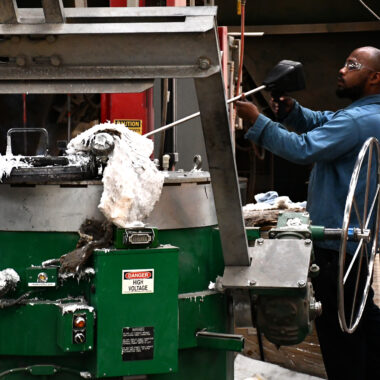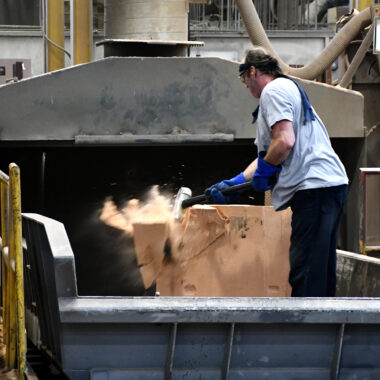Crafting Perfection: How to Achieve High-Quality Light Weight Aluminum Castings Whenever
In the realm of light weight aluminum spreading, the pursuit of perfection is a constant trip that requires a precise method and an eager understanding of the details involved. Achieving constant top notch light weight aluminum spreadings requires a thorough understanding of the procedures, from picking the ideal alloy to performing accurate mold styles and diligently controlling casting specifications.
Comprehending Aluminum Spreading Processes
Aluminum casting procedures, necessary in the manufacturing industry, entail the elaborate improvement of molten light weight aluminum right into solid forms via a collection of meticulously regulated actions. Recognizing these processes is vital to achieving high-grade light weight aluminum castings constantly - about aluminum casting. The main techniques utilized in aluminum spreading are die casting, sand casting, and financial investment casting

Each of these processes has its benefits and is picked based upon factors like complexity, volume, and wanted surface of the light weight aluminum spreading. about aluminum casting. Comprehending the complexities of these approaches is critical for producers aiming to create top quality aluminum castings regularly
Picking the Right Light Weight Aluminum Alloy
Picking the proper light weight aluminum alloy is an important decision in the production of top notch light weight aluminum castings. When selecting a light weight aluminum alloy for casting, it is crucial to consider the specific demands of the application to make sure optimum efficiency.
One of the most frequently utilized light weight aluminum alloys for spreading is A356 - about aluminum casting. For applications calling for high stamina, 7075 aluminum alloy is a preferred selection due to its remarkable strength-to-weight proportion.
In enhancement to mechanical buildings, factors to consider such as price, accessibility, and post-casting procedures ought to additionally influence the selection of the ideal aluminum alloy. By very carefully evaluating these aspects, suppliers can guarantee the manufacturing of high-grade aluminum spreadings that fulfill the preferred specs.
Executing Correct Mold Layout
Developing a reliable mold and mildew style is vital for guaranteeing the effective manufacturing of high-grade aluminum spreadings. Appropriate mold layout plays a considerable role in attaining the preferred features of the final item. To implement an effective mold style, elements such as material flow, cooling down rates, and component geometry should be carefully thought about.
One key element of mold layout is ensuring correct filling and solidification of the light weight aluminum within the mold tooth cavity. This entails creating jogger and gating systems that promote smooth steel flow and stop defects such as air entrapment or insufficient dental filling. Furthermore, integrating air conditioning networks into the mold and mildew style aids control solidification rates and lower the danger of porosity or shrinking flaws.

Controlling Casting Parameters

Ensuring Post-Casting High Quality Checks
To maintain the high top quality of light weight aluminum spreadings, thorough post-casting quality checks are essential. After the spreading procedure is finished, it is vital to make sure that the final products satisfy the wanted requirements and requirements.
Dimensional accuracy is one more essential aspect that must be confirmed during post-casting top quality checks. Dimensions of vital measurements and tolerances ought to be taken to confirm that the castings comply with the needed requirements. Additionally, mechanical residential or commercial properties such as firmness, tensile stamina, and effect resistance may need to be examined with material testing to make sure that the spreadings have the needed stamina and toughness for their designated application.
Verdict
In verdict, attaining top notch light weight aluminum castings calls for an extensive understanding of the casting procedures, picking the proper alloy, developing molds efficiently, controlling casting parameters diligently, and performing post-casting site web top quality checks diligently. By adhering to these actions, suppliers can constantly produce light weight aluminum spreadings that fulfill the highest possible requirements of top quality and performance.
Achieving constant top notch light weight aluminum castings demands a thorough grasp of the processes, from selecting the ideal alloy to carrying out accurate mold designs and diligently managing spreading criteria. The primary methods utilized in light weight aluminum casting are pass away casting, sand spreading, and investment spreading.
Investment spreading, also understood as precision spreading, includes developing wax patterns that are coated in ceramic to develop mold and mildews.Choosing the suitable light weight aluminum alloy is an essential decision in the manufacturing of top notch aluminum castings.Making certain accurate control over casting parameters is necessary for keeping consistency and high quality in light weight aluminum spreading production.